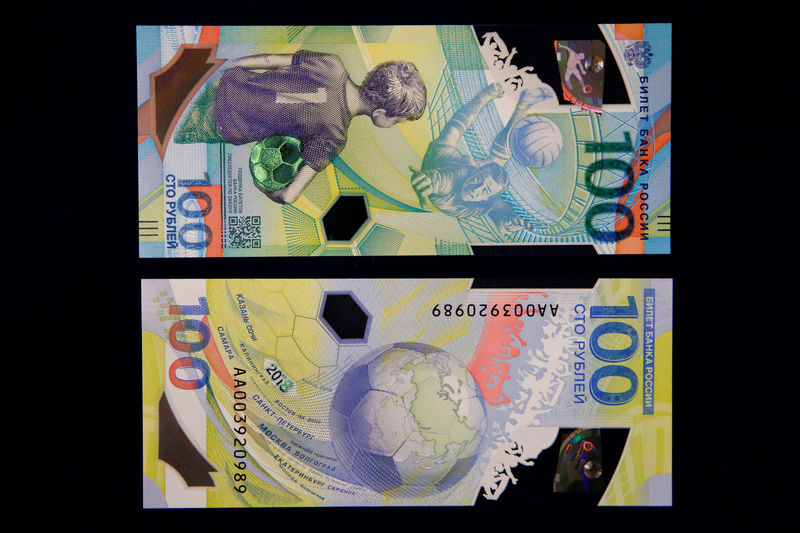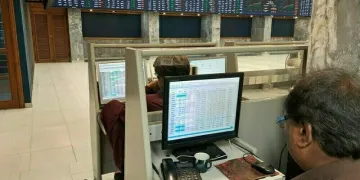 © Reuters. FILE PHOTO: The newly designed 100-rouble banknotes dedicated to the 2018 FIFA World Cup, are on display during a news conference in Moscow
© Reuters. FILE PHOTO: The newly designed 100-rouble banknotes dedicated to the 2018 FIFA World Cup, are on display during a news conference in MoscowBy Zlata Garasyuta and Polina Nikolskaya
MOSCOW (Reuters) – Russia’s central bank will keep its main interest rate at 7.50 percent until the end of the third quarter of 2019, with international risks such as any more sanctions seen as the biggest threat to the economic outlook, a Reuters poll showed on Friday.
The central bank raised rates for the first time since late 2014 on Sept. 14 and indicated that a rate cut is unlikely for the next year due to higher inflation risks driven by rouble volatility and a planned tax increase from 2019.
A monthly Reuters poll of 24 analysts and economists suggested the central bank will keep its main rate unchanged at 7.50 percent until the end of the third quarter of 2019. But some respondents did not rule out a rate increase because of the risks of new U.S. sanctions.
“In case of more material U.S. sanctions, we would see the central bank being forced to hike by more in response to the rouble depreciation and inflation pressures,” analysts at Morgan Stanley (NYSE:) said.
According to the poll, the central bank may cut its key rate in the fourth quarter of 2019, by 25 basis points to 7.25 percent.
The market is closely watching the progress of a draft bill in the U.S. Congress that includes a ban on holding new Russian sovereign debt and restrictions on dollar transactions involving several Russian state banks.
Inflation, a key indicator for the central bank, is expected to be at 3.8 percent by the end of this year, below the central bank’s target of 4 percent, according to the poll.
But it will accelerate to 5.0 percent in the first quarter next year before slowing down to 3.7 percent in the first quarter of 2020, according to the poll.
Analysts saw economic growth in Russia slowing down next year after reaching 1.8 percent in 2018 due to changes in monetary policy, the risk of new sanctions and increases in value-added tax from next year.
Gross domestic product is forecast to grow by 1.4 percent in 2019 and another 1.6 percent in 2020, according to the poll.
Expectations about the rouble’s future became more positive over the past month and it is seen trading at 62.31 against the dollar in 12 months compared with 64.50 forecast by the previous poll.
The Russian currency has gained more than 6 percent versus the dollar in the last two weeks, helped by higher oil prices and the central bank’s decision to halt purchases of foreign currency for state reserves until the end of the year.
But anti-Russian rhetoric could escalate in the United States ahead of the midterm election in November, said Vladimir Miklashevsky, an economist at Danske Bank.
“The geopolitical premium in the rouble remains high despite rising oil price,” he said.
Fusion Media or anyone involved with Fusion Media will not accept any liability for loss or damage as a result of reliance on the information including data, quotes, charts and buy/sell signals contained within this website. Please be fully informed regarding the risks and costs associated with trading the financial markets, it is one of the riskiest investment forms possible.
Source: Investing.com



























